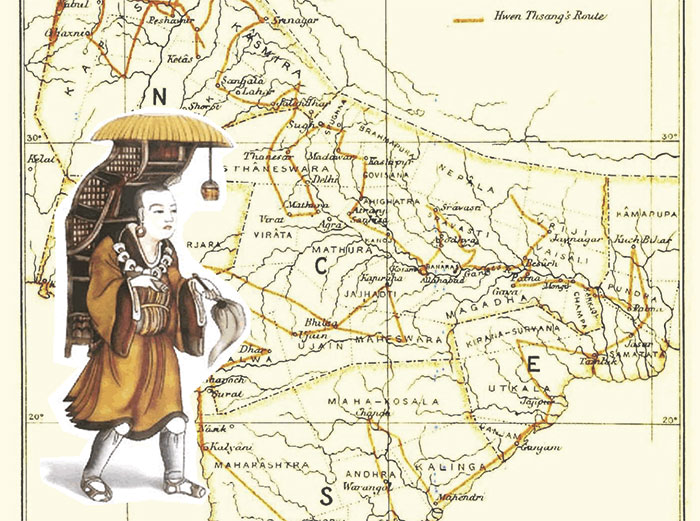A few indications as to the life of Xuan Zang, a translator who deeply affected the culture of the Middle Kingdom.
« Official translator of Buddha for China » : this is probably what was written was on Xuan Zang’s business card…
A good family heritage is quite helpful
What do you do when your great-great-grandfather was a minister of the Han Dynasty, when your great-grandfather was the Perfect of Shangdang under the Wei dynasty of the East, when your grandfather was a Professor at the Imperial Academy during the Qi dynasty of the North and your father was a Confucian magistrate of the Jiangling County under the Sui Dynasty? Do you play the gŭzhēng in a group of Mandarin proto-rock? No. You become one of the greatest translators of the history of Chinese Buddhism.
A good education is also quite helpful
In spite of his Confucian education, Xuan Zang quickly showed a keen interest in Buddhism. So after the death of his father in 611, he joined one of his older brothers in a Buddhist monastery. Xuan Zang was then 9 years old; four years later he took holy orders. While studying Buddhism, he was confronted with contradictions and deficiencies in the texts of this tradition then available in Chinese. He was then convinced that new translations were necessary. So he learned Sanskrit and left for India in 629.
Travelling broadens the mind
After secretly leaving China by the « Jade Passage » (Yumenguan), he followed the Silk Road through the Gobi desert, met the king of Turpan, escaped some thieves to reach Karasahr, went through the Bedel Pass to get to what is now Kyrgyzstan, he met the great Khan of Göktürks, went to Tashkent (nowadays the capital of Uzbekistan), continued through the desert until the Persians of Samarkand, passed the high mountains of the Pamirs by the Iron Gates, crossed the Amu Darya river, attended the funeral of Prince Tardu in Kunduz, went westward to reach what is now Afghanistan, then south to meet the King of Bamyan and after that he went east through Shibar pass, close to what is now Kabul, crossed the legendary Gandhara, reached Adinapur (Jalalabad) before finally arriving in Laghman. At that point he believed that he had arrived to India. One year (!) had gone past since he left.
… Well, translate now!
During the next 16 years, he visited India, travels of which we will not describe all the details. Let’s just say that the twenty volumes of these travels, written in 646 at the request of the Emperor and entitled Description of travels in the Western Regions at the time of Great Tang, is one of the most important sources for the study of medieval India and Central Asia. As a result the « small » translation agency that he set up upon his return did rather well: no financial translation or marketing translation, but a total of 1,330 translations into Chinese, including the 657 Buddhist texts brought back from India and the 600 chapters of the Mahaprajnaparamita Sutra … The foundations of all Chinese Buddhism to come.
Discover our translation agency.



